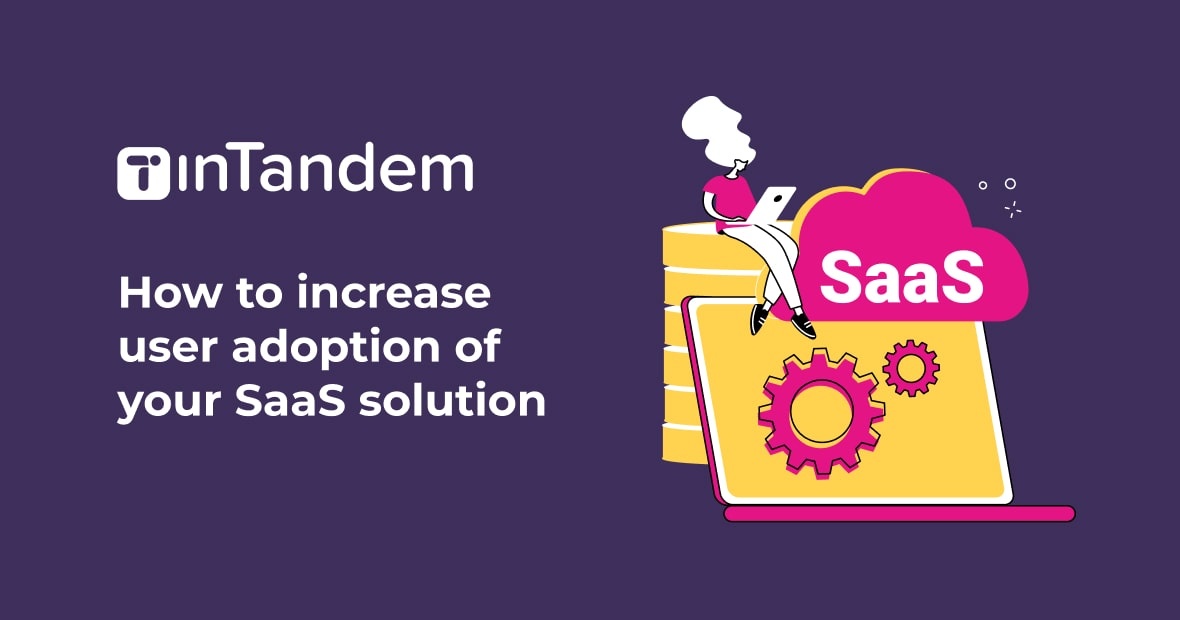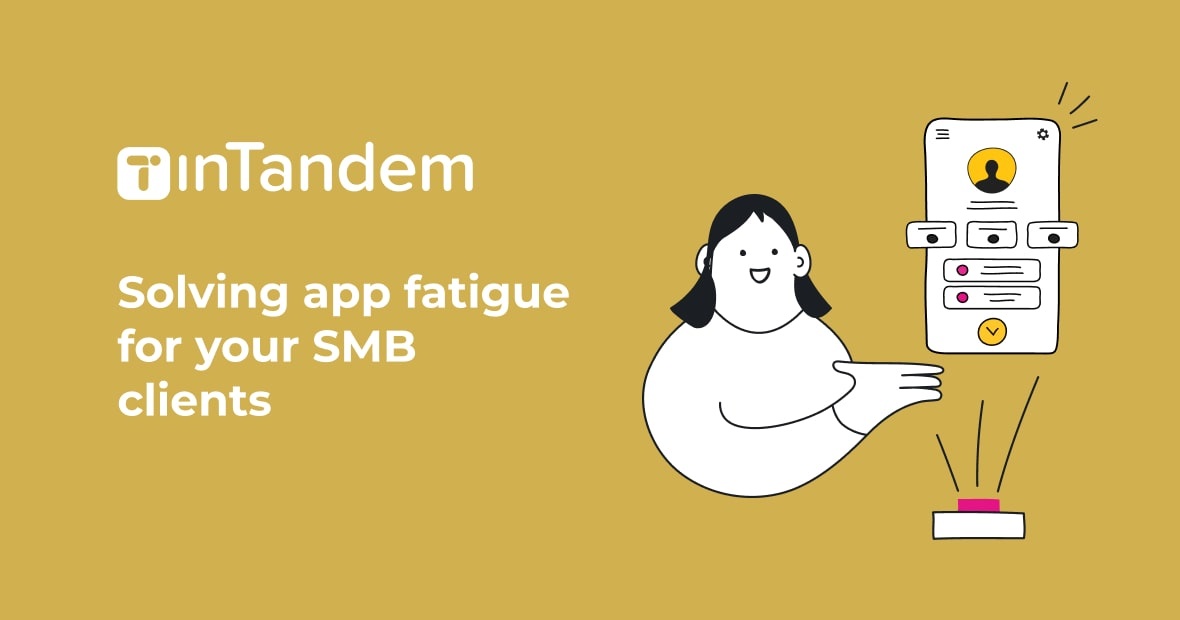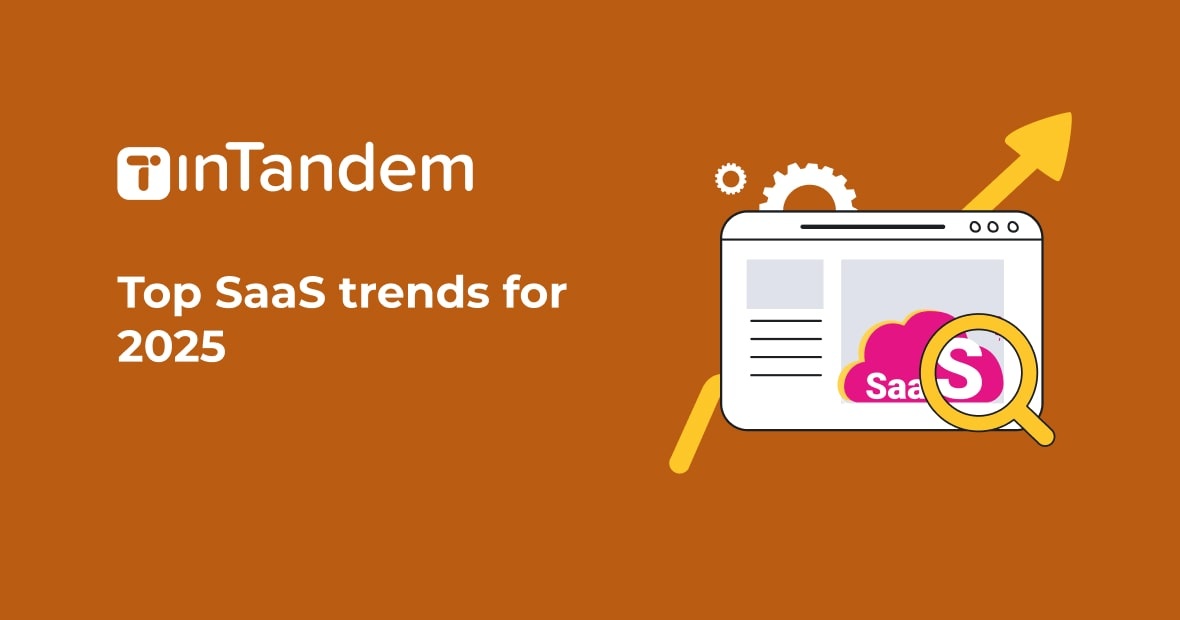You’ve started offering a SaaS product to your SMB customers, but your clients aren’t adopting it as quickly or completely as you expected. This is the hurdle of user adoption, which is when your clients and customers start actively using your solution or product.
Poor user adoption can destroy your project before it really gets off the ground, so it’s very important to create an actionable and effective user adoption strategy. In this article we’ll dive into an understanding of user adoption, metrics you should be looking at to measure it, and how to increase user adoption for your SaaS solution.
What is user adoption?
User adoption is what happens after the sales process is concluded. An SMB client has decided that your SaaS solution is perfect for its needs and has paid for a subscription. Now you hope to see them begin using your product, discovering its features, unlocking new levels of value, and incorporating it into their regular workflows.
Whether you’ve developed an in-house SaaS solution or partnered with another enterprise to offer a white-labeled SaaS product, getting your SMB clients to adopt your offering is crucial to success.
The benefits of high user adoption
1. Strengthens user growth
Effectively engaging SMB clients with your solution creates a growing client base, helping you drive expansion. As more SMB clients adopt and utilize your offerings, you can achieve sustainable growth and market penetration.
2. Reduces churn
When customers can’t understand how to use your product or don’t see the value they expected, they are likely to churn. When you increase user adoption, clients fully integrate your products into their operations, making them less likely to switch to competitors.
3. Increases Customer Lifetime Value (CLTV)
If your solution is deeply integrated into your SMB clients’ workflows, it increases their reliance on your offerings and ultimately, customer lifetime value. This leads to higher usage levels, repeat purchases, and potential upselling opportunities.
Metrics and KPIs to consider
Product adoption rate
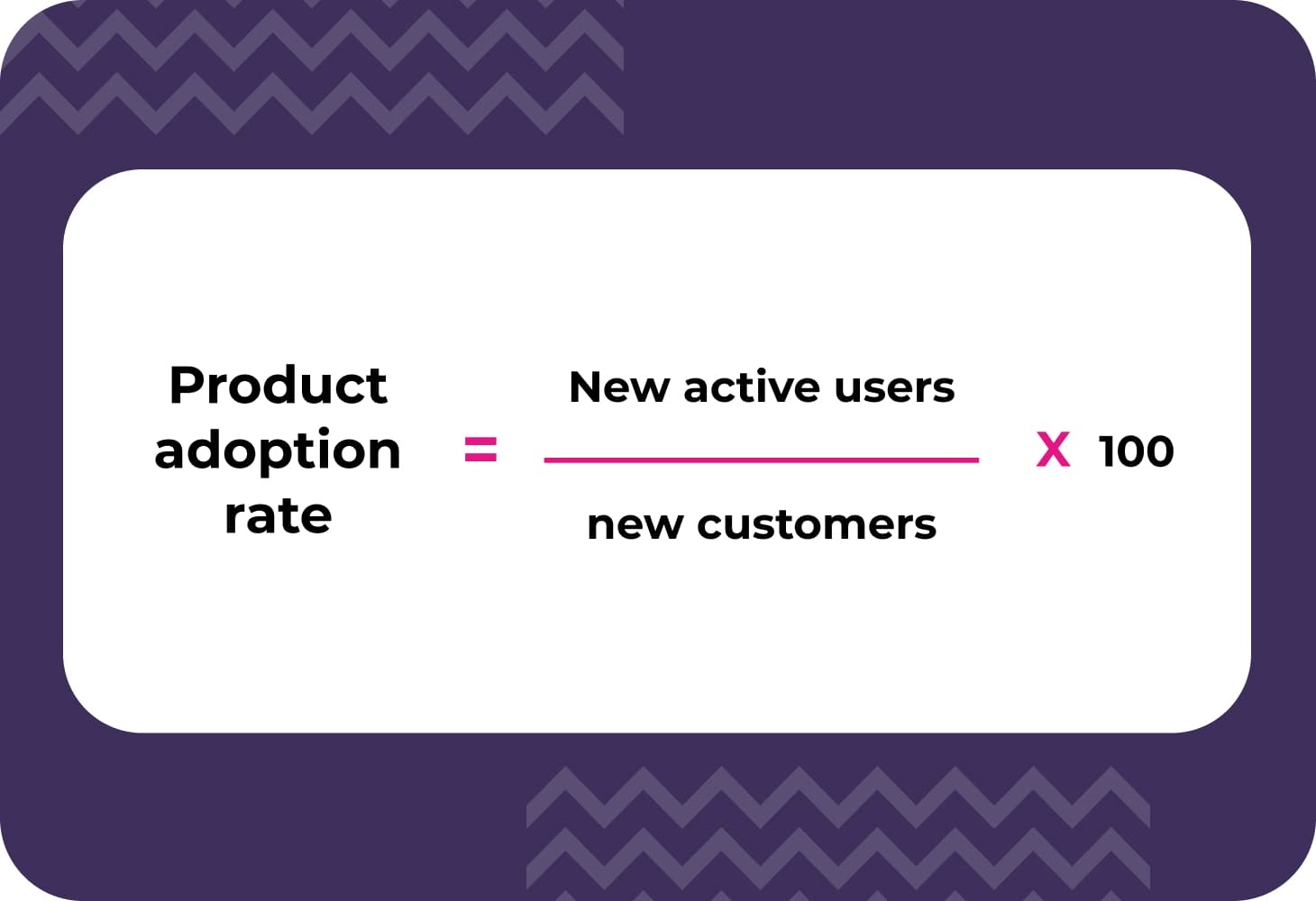
This is the percentage of new customers who actively adopted your product. It shows the level of uptake among your target audience.
Formula: New Active Users ÷ New Signups x 100
Time to first key action (TTFA)
TTFA measures how long it takes for users to adopt your product. You need to define the key action, like registering as a new user or full product implementation.
Daily/monthly active users
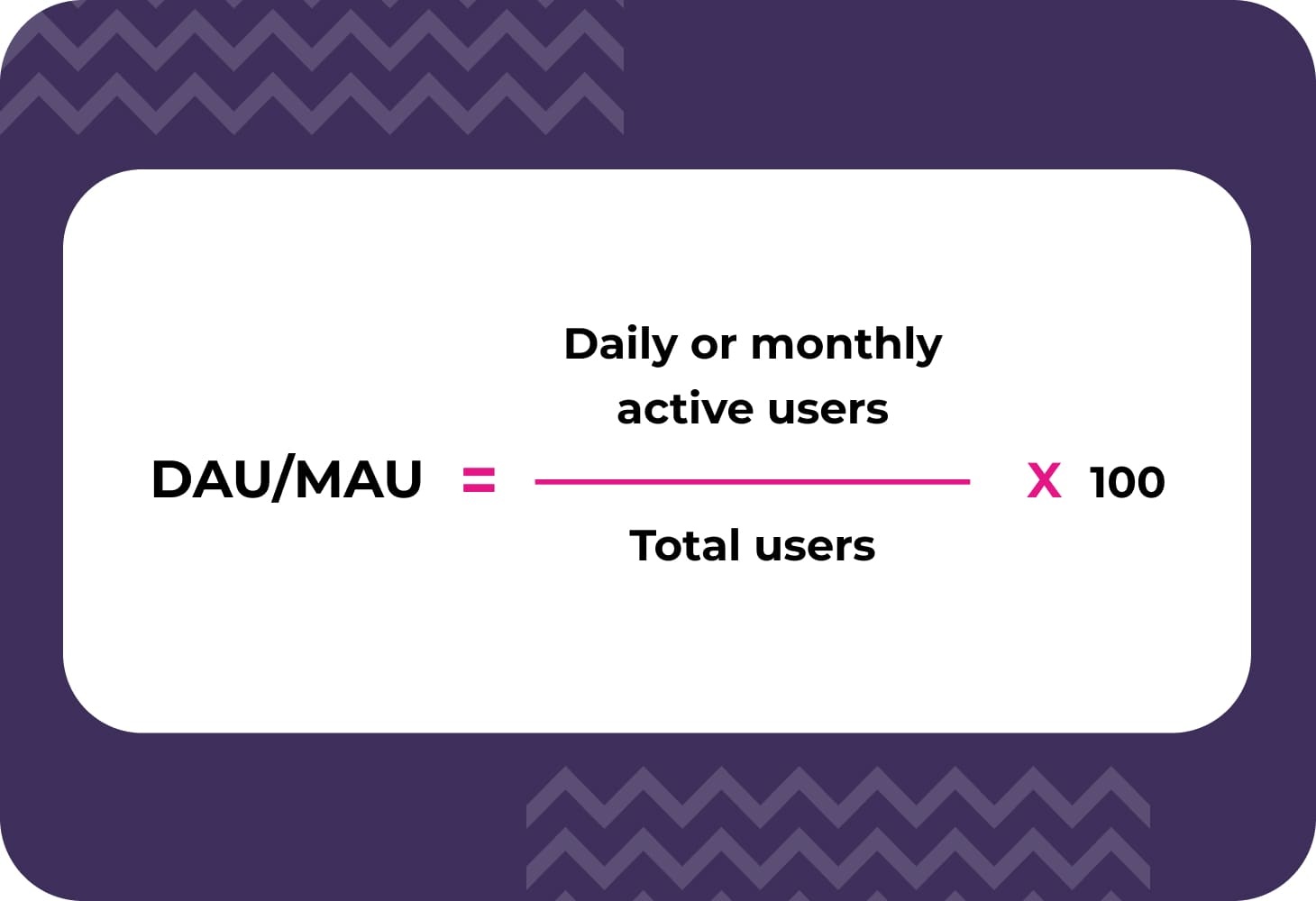
This helps you to understand what percentage of your customers interact with your solution on a regular basis. It allows you to roughly determine product adoption for a given period.
Formula: Daily or monthly active users ÷ total users x 100
Average time spent with product
This tracks how much time customers spend using your solution, which helps reveal what adoption looks like.
Formula: Total time spent ÷ total users
Average use frequency
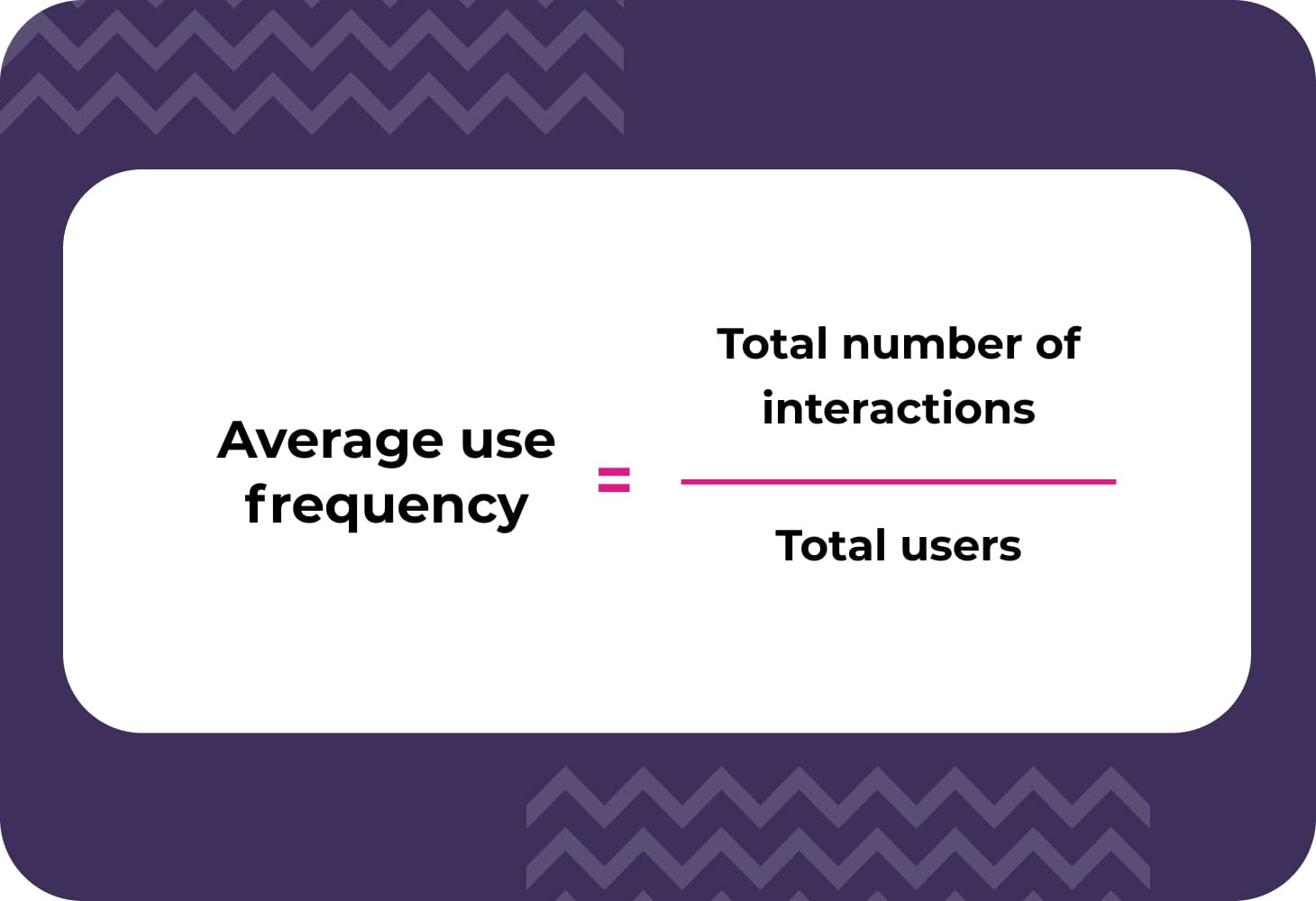
Average use frequency also helps you understand the adoption process. It measures how often a typical user uses your product.
Formula: Total number of interactions ÷ total users
Net promoter score (NPS)
NPS shows how satisfied your customers are with your solution. To calculate your NPS, ask users how likely they are to recommend your product, on a scale of 0-10. Then classify them according to their response. Detractors score 0-6; passives score 7-8; promoters score 9-10. Calculate what percentage of respondents fall into each category, then subtract the detractors from the promoters.
Formula: % of Promoters — % of Detractors
How to increase user adoption
Personalize and optimize your onboarding process

It’s vital to remove friction from the onboarding process, because users who hit snags are more likely to churn. Minimize the number of required fields, offer social login options, and auto-populate forms. Try to design elements in ways that are familiar from other tools, and personalize as much as possible.
Welcome screens and tutorials enhance onboarding by providing a comprehensive overview of the capabilities and demonstrating how to get started. You should also incorporate interactive onboarding elements inside the product like tooltips, checklists, and guides, to minimize the learning curve.
Perhaps the most effective way to personalize your onboarding experience is to include a one on one session between a customer success manager and the SMB where the account can be set up and all questions can be answered. This ensures that the account and the SMB owner (who might not be tech savvy) is ready to go.
Use in-app guidance and announcements

The faster new users start using your product, the higher your adoption rates will be, so offer interactive walkthroughs that show them key features and functionalities, allowing them to learn by doing. Break down complex tasks into manageable steps.
Integrate advice, announcements, and in-app guidance into the flow of work, so that users receive timely and relevant information about updates, events, or new features. It’s best to segment each message so that it reaches only those who need to see it, to reduce user overwhelm and deliver a personalized experience.
Gather feedback and use it to improve
Users are your best resource for increasing user adoption, so ask them how you can improve the onboarding and user experience. Use surveys, feedback forms, interviews, and analytics tools to gain insights into user needs, preferences, and pain points.
It’s important to engage with users at various touchpoints throughout their journey. Establish clear channels for communication, and make tangible improvements based on user input to build trust and loyalty.
Position yourself as an authority on the subject
When you’re seen as an expert in your field, it builds credibility and trust for your SMB solution. Share valuable insights, information, and best practices through webinars, workshops, blog posts, and interactive videos to educate users about your solution and demonstrate your commitment to helping them succeed.
Don’t be afraid to toot your own horn a little. Highlight the innovations, new features, and impact of your solution throughout all your content, and scatter compelling calls-to-action (CTAs) that direct people to understand, explore, and try out your product. By providing value to your audience, you foster stronger connections and increase user adoption.
Ensure the experience is seamless and great
Delivering an outstanding user experience is fundamental to increasing user adoption. It involves prioritizing usability, simplicity, and consistency across all touchpoints, with intuitive interfaces, streamlined workflows, and minimal friction.
At the same time, deliver excellent customer support that responds quickly and resolves issues promptly. Offer guidance whenever it’s needed, and make sure that all interactions with your solution are effortless and enjoyable.
Develop new features ahead of the rest
Once you’ve got new users hooked, you want to keep moving them to new levels of adoption by staying attuned to market trends, customer needs, and emerging technologies. Invest in R&D and maintain agile development practices to accelerate the delivery of new features and updates and gain a competitive edge in the market.
Actively involving users in the product development process through beta testing programs, user feedback sessions, and co-creation initiatives ensures that new features align closely with user needs and expectations.
Improving user adoption is critical for business success
User adoption rates can be a make or break issue for the success of your SaaS SMB offering, and likewise your relationship with your SMB clients. When you provide a SaaS solution that resolves their pain points and has an intuitive onboarding process, you’ll position yourself as a trusted partner in their journey to success.
Understanding how to increase user adoption is key to driving revenue, customer loyalty, and business growth. With an effective user adoption strategy, you’ll see adoption rates rise and your bottom line soar.






















